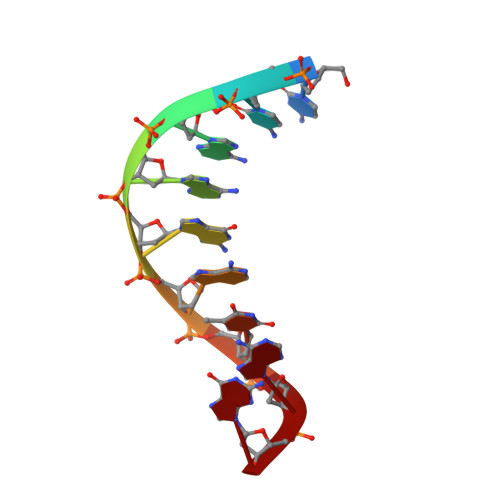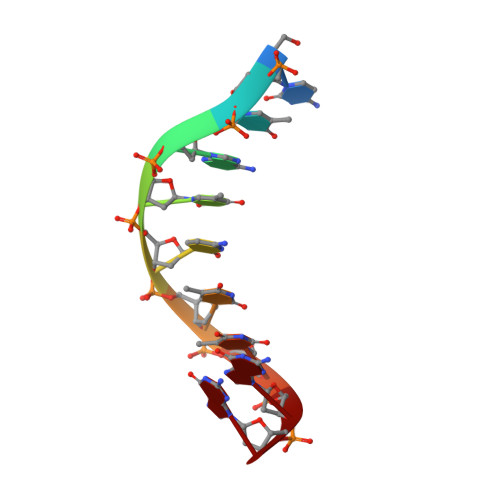First Structure of a Designed Minor Groove Binding Heterocyclic Cation that Specifically Recognizes Mixed DNA Base Pair Sequences.
Harika, N.K., Germann, M.W., Wilson, W.D.(2017) Chemistry 23: 17612-17620
- PubMed: 29044822
- DOI: https://doi.org/10.1002/chem.201704563
- Primary Citation of Related Structures:
6ASF, 6AST - PubMed Abstract:
The high-resolution NMR structure of the first heterocyclic, non-amide, organic cation that strongly and selectively recognizes mixed AT/GC bp (bp=base pair) sequences of DNA in a 1:1 complex is described. Compound designs of this type provide essential methods for control of functional, non-genomic DNA sequences and have broad cell uptake capability, based on studies from animals to humans. The high-resolution structural studies described in this report are essential for understanding the molecular basis for the sequence-specific binding as well as for new ideas for additional compound designs for sequence-specific recognition. The molecular features, in this report, explain the mechanism of recognition of both A⋅T and G⋅C bps and are an interesting molecular recognition story. Examination of the experimental structure and the NMR restrained molecular dynamics model suggests that recognition of the G⋅C base pair involves two specific H-bonds. The structure illustrates a wealth of information on different DNA interactions and illustrates an interfacial water molecule that is a key component of the complex.
- Department of Chemistry, Georgia State University, Atlanta, GA, 30303-3083, USA.
Organizational Affiliation:


















